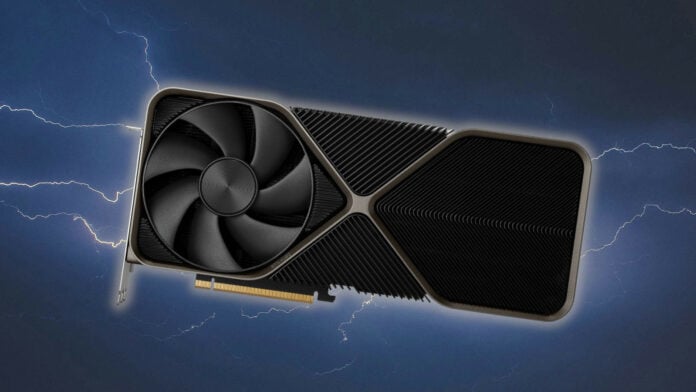The demands that graphics cards place on our power supplies has steadily grown over the past several years. Just two generations ago, Titan RTX’s 280W TDP feels minute compared to the 450W spec of GeForce RTX 4090. Sadly, Nvidia is apparently continuing this trend with its RTX 50 series, pushing the power consumption ceiling up to 600W.
There’s no doubt that the RTX 50 series will push performance to new heights. While architectural improvements will account for part of the generational leap, DLSS will also have its part to play. However, the best graphics cards are as powerful as they are power-conscious, with efficiency becoming a more important metric for companies and consumers alike. This is a difficult balancing act for any manufacturer, Nvidia included.
Leaker kopite7kimi claims RTX 50 series graphics cards’ power consumption is higher than current generation 40 series models. This rise applies across the lineup, “with higher SKUs increasing more.” In conversation with OneRaichu before they locked down their account, the X user confirmed that RTX 5090 would eat a monstrous 600W (previously thought to be 500W) and RTX 5080 would jump up to 400W.
Back in July, Seasonic shared RTX 50 Series TDPs via its wattage calculator. The company removed the entries shortly after their publication for undisclosed reasons. Without confirmation, it’s just as likely that their publication was an error or in breach of embargo. With kopite7kimi’s claims in mind, these TDP values appear more credible.
| SKU | TDP | vs. RTX 40 series |
|---|---|---|
| GeForce RTX 5090 | 600W | +150W vs. RTX 4090 |
| GeForce RTX 5080 | 400W | +80W vs. RTX 4080 +80W vs. RTX 4080 Super |
| GeForce RTX 5070 | 220W | +20W vs. RTX 4070 +0W vs. RTX 4070 Super |
| GeForce RTX 5060 | 170W | +55W vs. RTX 4060 |
| GeForce RTX 5050 | 100W | N/A |
At first glance, it’s surprising to see GeForce RTX 5060 see the biggest hike relative to its predecessor, GeForce RTX 4060. However, a 170W TDP would see it mirror GeForce RTX 3060 and just 10W ahead of GeForce RTX 2060.
Personally, I’m glad to see Nvidia address this oddity, as the Lovelace card always felt underpowered and surprisingly poor value compared to its Ampere equivalent. Here’s hoping GeForce RTX 5050 comes through as a proper budget pixel pusher the RTX 40 series is sorely missing.
Turning to GeForce RTX 5070, it needs more juice than GeForce RTX 4070 but is a match for GeForce RTX 4070 Super. While there’s no guarantee that Nvidia will be as generous with specifications as it’s being with watts, this isn’t a huge departure from current stock.
With all the above in mind, the biggest changes are GeForce RTX 5080 and 5090. The latter’s 600W TDP is intimidatingly large on paper, maxing out what the 12VHPWR connector is capable of, hence Nvidia’s reported testing at such a level. Don’t fret, though, as the Founders Edition cooler is apparently just two slots thick.
Curiously, there’s no mention of the previously rumoured Nvidia RTX Titan. The company could plan to launch the halo SKU further into the lifespan of RTX 50 series, or forgo releasing it completely, as it seemingly did with RTX 40 series.
We’re still a while away from the proposed launch date of RTX 50 series, so there’s plenty of time for Nvidia to switch things up. As such, be sure to take all the above with a pinch of salt.

